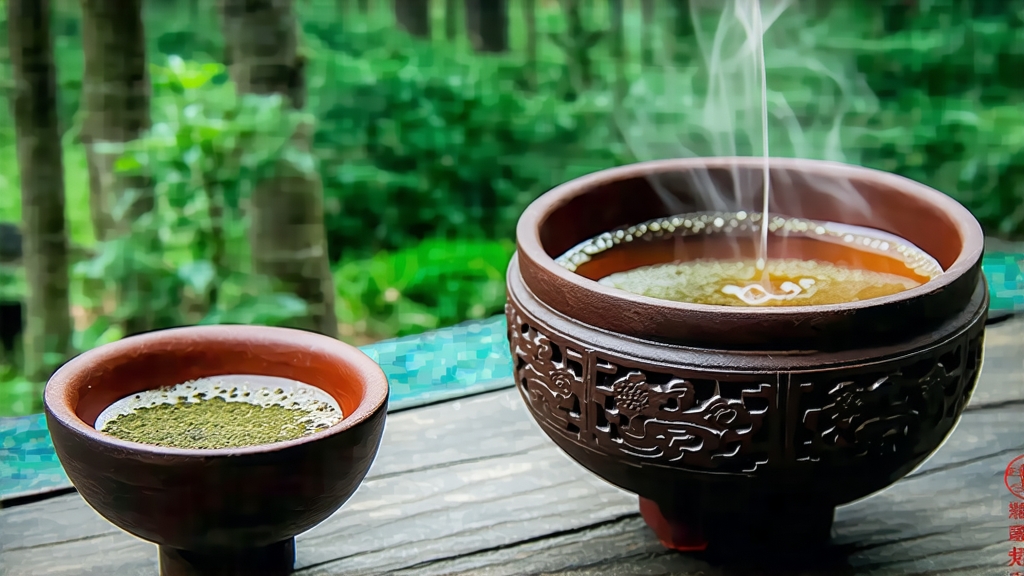
Tucked into the fog-crowned Wudong peaks of Guangdong’s Phoenix Mountain range, Phoenix Dancong—literally “single-bush”—is the most aromatically flamboyant member of China’s oolong family. Unlike the terraced hedges of modern tea gardens, Dancong trees stand free like gnarled olives, some exceeding six hundred years in age, their roots plunging through mineral-rich granitic soils. Locals insist that each ancient trunk sings its own “mountain song,” a poetic way of saying that every plant has evolved a unique flavor fingerprint. Centuries of selective propagation have amplified these songs into a botanical choir of more than eighty recognized aromatic profiles, from orange-blossom honey to roasted almond, ginger flower to fresh lychee.
The documented story begins during the Song dynasty, when imperial exam candidates from the north brought tribute tea customs to the southern frontier. A Ming-era gazetteer records that villagers presented “Wu Dong Cha” to the Wanli Emperor; the court’s scribes praised its ability to retain fragrance through seven infusions, a benchmark still cited today. By the Qing, Dancong had become so coveted that magistrates sealed entire valleys during harvest, posting guards to deter leaf rustlers. The 1980s economic liberalization revived interest; tea scientists mapped the mountain’s micro-climates, clonal selections were released, yet the most sought-after lots remain wild or half-wild bushes scattered above eight hundred meters.
Dancong is not a single cultivar but a population of genetically diverse trees. Farmers classify them by aroma type, the famous “Ten Fragrances” being the commercial shorthand. Almond Fragrance (Xing Ren Xiang) carries a marzipan sweetness; Yellow Gardenia (Huang Zhi Xiang) layers tropical flowers over a creamy body; Ginger Flower (Jiang Hua Xiang) sparks with peppery top notes that dissolve into rock-candy depth. The ultimate rarity is Song Zhong, said to descend from the original Song-dynasty mother tree; its cup balances longan fruit, toasted sesame and a cooling alpine menthol that lingers on the breath.
Crafting Dancong is a high-wire act between oxidation and fragrance retention. Picking starts at dawn when mountain mist is still thick, two or three half-mature leaves plus a bud snapped at the node to ensure intact enzymes. The first wilting occurs outdoors on bamboo screens chilled by valley air; as the sun rises, leaves are moved into shaded corridors where they are rhythmically tossed every fifteen minutes. This “green shaking” bruises the margins just enough to liberate floral precursors while keeping the lamina alive. After four hours the leaf emits a piercing fruit-skin aroma; the master judges the exact moment to halt oxidation, usually between 25 % and 30 %. A brief electric wok fixes the enzymes at 220 °C, killing the green yet preserving the mountain perfume.
What follows is the most labor-intensive stage: strip-shaped rolling. A linen cloth bundle holding no more than two kilograms is rolled against bamboo mats, twisted, untwisted, re-bundled, until the leaf skeleton cracks and oils migrate to the surface. The rolls are then spread on charcoal-fired bamboo baskets where they will bake, rest, bake again across two nights. Unlike Wuyi rock teas that favor heavy charcoal for mineral punch, Dancong bakers seek only a whisper of smoke that lengthens the finish without masking the aroma. The final moisture target is 4 %—any lower and the fragrance contracts; any higher and the tea risks souring during Guangdong’s humid summer.
To brew Phoenix Dancong like a local, begin with a 120 ml gaiwan and 6 g of leaf—roughly two heaping tablespoons. Pre-heat the vessel until too hot to touch; the shock of radiant heat “awakens” curled strips. Use water just off a rolling boil, 95–98 °C, but pour from low height to avoid scalding the leaf surface. The first infusion, a mere five-second flash, is discarded; it rinses away charcoal dust and aligns leaf temperature. The second steep, ten seconds, releases a brilliant apricot-gold liquor. Bring the cup to your upper lip, inhale through the nose and mouth simultaneously; the aroma should feel like walking into a tropical florist at dusk. Sip, hold for three heartbeats, then exhale through the nose: good Dancong will “back-fragrance” the retro-nasal passage with shifting layers—first orchid, then honey, finally a cooling camphor echo